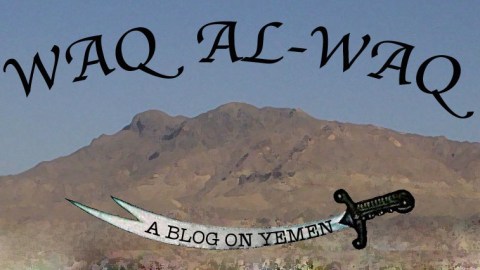Who is Ruling Yemen?

Over the past couple of days as the international media has once again focused on the bloody fighting in Sanaa, they have invariably asked themselves, Yemenis, and outside observers the one question that no one knows: who is ruling Yemen?
It is a simple question, but sometimes simple questions can be the most difficult.
The problem with this one is that it assumes Yemen is a state like we in the west tend to think of states, but it isn’t and maybe it never was (although that is a topic for a different post)/
The vast majority of the coverage over the past couple of days has centered on Sanaa, which makes sense. That is where most of the violence is and that is where most of the journalists are.
There has also been coverage, in the Arabic press, of other protests centers, cities like Taizz, Hudaydah, Dhammar and so on.
But as I mentioned yesterday this is only part of the story – one of the many Yemens at play at the moment.
This is the Yemen, this central region centered on Sanaa, that we along with the media have come to think of as the Yemen. This is where Ahmad Ali, the president’s eldest son, and a series of cousins, brothers and other clan members are defending the property of their patriarch and their clan by trying to hold onto the state against people like Ali Muhsin al-Ahmar, the defected general, and the ten sons of the late Shaykh Abdullah al-Ahmar.
For their part, the protesters are eager to see Salih and his sons removed, but none of them want to replace one Hashid tribesman president with another. Yemen’s revolution has become a messy fight for power, riches, and survival at the top while those on the bottom struggle to survive.
This is the main narrative at the moment, and it is one that is well-known. No one is really in charge in the sense that they can impose their will on other, dissenting groups. But a number of people have enough power to effectively veto – through force of arms – any deal they don’t like, which is one of the reasons we have a precarious peace that, over the last couple of days, has tipped back to war.
But there are other Yemens, many other Yemens, that we hear and know little about. Up in the north, on the border with Saudi Arabia, in what the maps tell us is still part of Yemen, the Huthis are effectively running the show.
Although the Saudis, as the Saudis like to do in Yemen, are freelancing and trying to stir up trouble by paying tribesmen to fight the Huthis. Saudi has tried this approach a number of times over the past several years and it has yet to work, but the elderly princes still seem to think it might.
Other Yemens have other leaders – in the Abyan we’re all aware of the Islamic militants linked to AQAP who are trying to take and seize territory.
Why they are doing that is, at least for me, not understood very well. After bin Laden’s death, the US leaked quotes that suggested AQAP had asked bin Laden about trying to take over towns and he told them not to, precisely because they would be such easy targets for air strikes. (But, as we learned from Counterstrike, it is almost impossible to know if that was disinformation from the US government or actual intelligence.)
Other places in the south have other individuals and groups attempting to seize power.
There is no longer a just a single Yemen – different groups rule different parts of the country. And at this stage the question we should be asking is: can whatever or whoever comes after Salih ever reclaim the territory the state is giving up now?
Because thinking through the answer to that question is what will prepare the US and the international community to deal with what comes next in Yemen.





